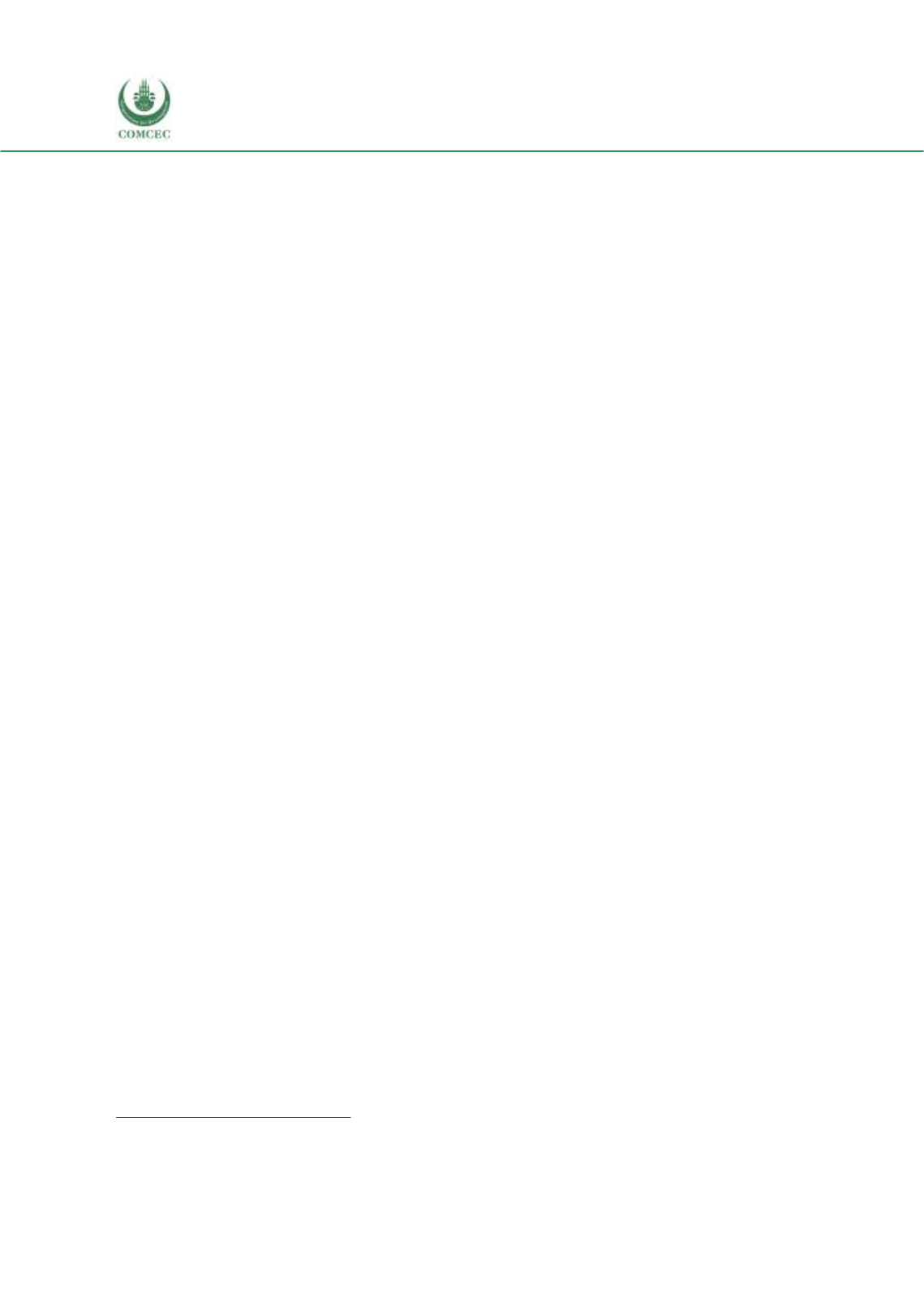

Reviewing Agricultural Trade Policies
To Promote Intra-OIC Agricultural Trade
58
trade of meat across potential trade partners. For live animals, only four potential importers
(Lebanon, Jordan, Turkey and Bangladesh) apply higher than average intra-OIC tariff rates for
the exports coming from Malaysia.
Other potential importing countries for live animals listed in Table 3.11 have lower than average
OIC tariffs against exports originating from exporting countries (Malaysia, Indonesia, Morocco,
Burkina Faso), thus creating a ground for potential preferential trade agreements, towards zero
tariff protection.
For oil seed exports, Turkey is faced with higher than average tariff rates from Iran and Tunisia.
For sugar exports, Indonesia faces higher than average tariff rates imposed by many importing
OIC countries as demonstrated in Table 3.12. The highest protection levels among all product
divisions are observed for sugar and oil seeds. The intra-OIC tariff rates against imports of oil
seeds are already high; yet bilateral tariff rates against exports originating from Turkey are
higher even more in two imposing countries, Iran and Tunisia. For sugar imports, the intra-OIC
tariff rates are highest among the five selected product divisions. Sugar imports originating from
Indonesia are protected with higher than average intra-OIC tariffs in nine of the importing
countries.
Indonesia, Malaysia, and Turkey are not only the countries that are identified as potential
exporters of these potential products; in COMCEC (2013b), these countries are also emphasized
as countries that exhibit greatest potential as major agricultural FDI destinations within the OIC.
Overall, these three top exporting countries in five product divisions are faced with high tariff
protection frommany of the potential importers. The tariff rates are quite high when compared
to the average tariff rates applied in OIC intra-regional trade. Although more analysis is needed
to explore welfare effects of trade diversion, there is a room for lowering of tariffs against the
products coming from the top exporters. Such trade diversion has a prospect to enhance intra-
OIC trade in creating new trade possibilities across the OIC countries.
As underlined above, the analysis of NTMs is subject to data availability limitations. Specifically,
the NTM prevalence over products and the fraction of trade in value terms that is affected by the
NTMs are not available for all countries, all products and all NTM types. The WITS database on
NTMs does not cover the NTM related data of Comoros, Djibouti, Egypt, Iraq, Jordan, Somalia,
Sudan, Syria and Yemen from the Arab group, of Albania, Azerbaijan, Bangladesh, Iran,
Kazakhstan, Kyrgyz Republic, Turkmenistan and Uzbekistan from the Asian group, and Chad,
Gabon, Guinea, Guinea-Bissau, Mali, Mozambique, Sierra Leone, Togo and Uganda from the
African group. The available data for the most recent year and for other OIC countries and some
other country groups such as EU and ASEAN are presented in Tables F.13, F.14, and F.15 in
Annex F.
11
More specifically, these tables cover the technical measures, i.e., SPS measures under
the classification “A”, TBT measures under the classification “B” and pre-shipment inspection
and other formalities under the classification “C”, as the data on non-technical measures is
missing for a larger number of countries. Besides, only a single statistic, the coverage ratio (CR),
is presented in these tables, and the CR for a given country, a given product group, and a given
NTM type indicates the percentage of total import value that is subjected to the NTM regulation.
For instance, a CR of 92.38% for “Animals” associated with SPS measures in Kuwait indicates
that 92.38% of the total import value for this aggregated HS group is transacted under SPS
regulations.
11
The NTM Map data that provides NTM data for a large set of countries and five different NTMs (including SPS and TBT
measures) covers only the 2010-2012 period.


















